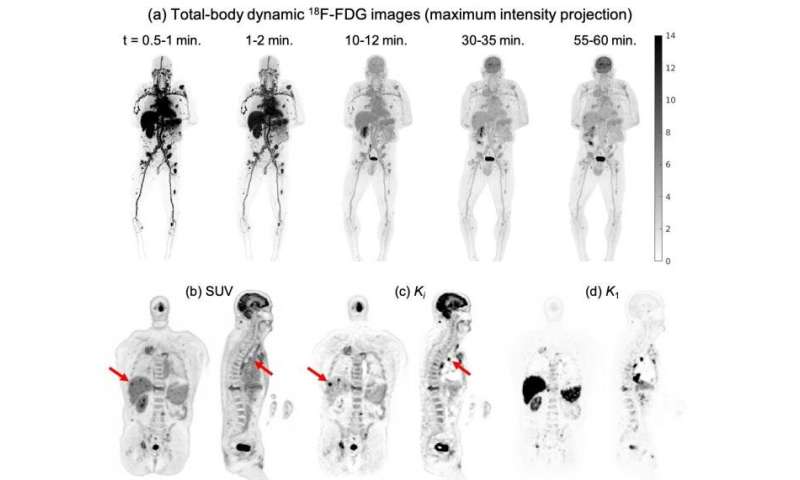
Results from the first study using uEXPLORER to conduct total-body dynamic positron emission tomography (PET) scans in cancer patients show that it can be used to generate high-quality images of metastatic cancer. The research was presented at the Society of Nuclear Medicine and Molecular Imaging 2020 Virtual Annual Meeting on July 11-14.
While static PET provides a simple snapshot of radiopharmaceutical concentration, dynamic PET with tracer kinetic modeling can provide parametric images that show how tissue is actually behaving. Parametric images have the potential to better detect lesions and assess cancer response to therapy. This potential, however, has not been fully studied in the clinic because conventional PET scanners have a limited axial field-of-view and are not capable of simultaneous dynamic imaging of lesions that are widely separated in the body.
“The focus of our study was to test the capability of uEXPLORER for kinetic modeling and parametric imaging of cancer,” explained Guobao Wang, Ph.D., associate professor and Paul Calabresi Clinical Oncology K12 Scholar in the department of radiology at the University of California (UC), Davis, in Sacramento, California. “Different kinetic parameters can be used in combination to understand the behavior of both tumor metastases and organs of interest such as the spleen and bone marrow. Thus, both tumor response and therapy side-effects can be assessed using the same scan.”
A patient with metastatic renal cell carcinoma was injected with the radiotracer 18F-FDG and scanned on the uEXPLORER total-body PET/CT scanner. The static PET standardized uptake value (SUV) was calculated and kinetic modeling was performed for regional quantification in 16 regions of interest, including major organs and multiple metastases. The glucose influx rate was calculated and additional kinetic modeling was implemented to generate parametric images of the kinetic parameters. The kinetic data were then used to explore tumor detection and tumor characterization.
Multiple metastases were identified on the dynamic PET/CT scan, confirming that it is feasible to perform total-body kinetic modeling and parametric imaging of metastatic cancer. Parametric images of glucose influx rate showed improved tumor contrast over SUV in general, and specifically led to improved visibility of cancer lesions detection in the liver. Total-body kinetic quantification also provided multi-parametric characterization of tumor metastases and organs of interest.
Source: Read Full Article
